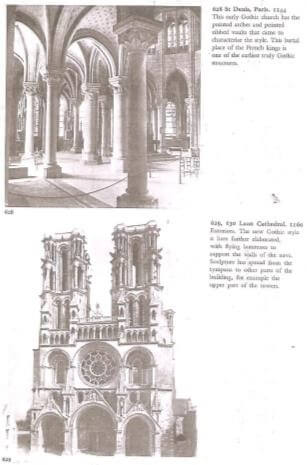History Of Gothic Assignment Help
The truly Gothic features, namely great height, pointed arches and pointed ribbed vaults were seen much before the movement actually started. These features were further developed in a number of churches founded soon after the middle of the century; most important are those at Notre Dame at Senlis(1156) and at Soissons (1160-1212), but here are numerous other examples, for it was an age of great building activity. The development of the new style was carried even further at Laon, begun about 1160, for there are to be seen many of the features which were soon to be the hallmarks of the style, namely three western portals, all adorned with sculptures, and flying buttresses above the aisles to support the walls of the main aisle. The cathedral is, however, unusual in some respects, for it has a square east end instead of the buttressed apse or chevet usual in France, and seven towers were allowed for in the plan, which suggests the influence of German Romanesque. In the developed Gothic style in France, where height became almost an obsession, it was thereafter found hardly possible to include one at the crossing. Though the idea of towers at the ends of the transepts is to be seen sometimes in embryo, they were seldom built elsewhere than at the west end, where their lower stages formed a vital part of the complex of the west front; the upper stages were not always completed.
History Of Gothic Assignment Help By Online Tutoring and Guided Sessions from AssignmentHelp.Net



